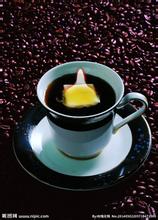Venezuelan coffee flavor producing areas introduce boutique coffee San Cristobal
The coffee produced in Venezuela is different from other coffee in Latin America. It tastes delicious, sour and has delicious fruit. This kind of coffee is most suitable for medium to deep roasting, which can not only be mixed but also has its own characteristics. Most of the country's coffee is exported to Russia, Colombia and other places, and some small plantations export coffee on their own. In many industries, the Venezuelan coffee growing industry is only one of the ordinary, not particularly prominent Fuligao coffee experts, among the many coffee plantations under the Andes in Venezuela, there is an ancient farm belonging to the Pablo and Pulido families, although the size of this ancient farm has shrunk, but since the 1980s The farm has been growing bourbon coffee trees and constantly exploring new coffee varieties to inject new blood into the old farm. The best coffee producing area in the country is the southwestern state of Tazila, where Montebello in San Cristobal is produced. Coffee cultivation in Venezuela begins with the introduction of coffee trees from Martinique in 1730, and the development of coffee in this country did not receive much attention at the time of introduction. Because Venezuela was in the heyday of the oil industry, coffee development was in the doldrums. It was not until later that it slowly recovered and not only planted the original Tippica and bourbon coffee trees, but also developed new producing areas and countries produced different flavors of coffee due to different climate, soil and altitude. And different countries also lead to different paths of coffee because of different development history. Next, Fuligao coffee experts will lead you into Venezuela to learn about the history of coffee development in this country.

Important Notice :
前街咖啡 FrontStreet Coffee has moved to new addredd:
FrontStreet Coffee Address: 315,Donghua East Road,GuangZhou
Tel:020 38364473
- Prev

Introduction of boutique coffee in Santo Domingo coffee producing area of Dominican Republic
In the early 18th century, coffee was introduced to Domiga from Martinique, and fine coffee was produced in the north represented by Hibao and in the south, including Okayabani Santo Domingo. Among them, the coffee produced by Santo Domingo and Barney, which is almost synonymous with domiga coffee, is a world-famous high-quality coffee. Santo Domingo coffee, which is characterized by freshness and elegance,
- Next

The unusually fruity Hawaiian Kona coffee introduces fine coffee.
Although Hawaii is often affected by tornadoes, the climatic conditions are very suitable for the coffee industry. There is plenty of rain and sunshine here, and there is no worry of frost. In addition, there is a strange natural phenomenon called free shade (freeshade). On most days, at about two o'clock in the afternoon, white clouds appear in the sky for coffee trees
Related
- Does Rose Summer choose Blue, Green or Red? Detailed explanation of Rose Summer Coffee plots and Classification in Panamanian Jade Manor
- What is the difference between the origin, producing area, processing plant, cooperative and manor of coffee beans?
- How fine does the espresso powder fit? how to grind the espresso?
- Sca coffee roasting degree color card coffee roasting degree 8 roasting color values what do you mean?
- The practice of lattes: how to make lattes at home
- Introduction to Indonesian Fine Coffee beans-- Java Coffee producing area of Indonesian Arabica Coffee
- How much will the flavor of light and medium roasted rose summer be expressed? What baking level is rose summer suitable for?
- Introduction to the characteristics of washing, sun-drying or wet-planing coffee commonly used in Mantenin, Indonesia
- Price characteristics of Arabica Coffee Bean Starbucks introduction to Manning Coffee Bean Taste producing area Variety Manor
- What is the authentic Yega flavor? What are the flavor characteristics of the really excellent Yejasuffi coffee beans?

